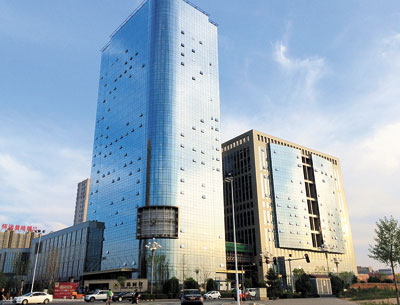
AT the section of the Great Wall of China that runs through Yulin, tour guide Gao Jing says she tried to learn English in expectation of the increased number of overseas visitors the city planned to attract as part of its economic transformation.
But the international tourists haven’t come to Yulin, once a coal, oil and natural gas boom town in the northwestern province of Shaanxi, and in their absence she has forgotten her English.
“Sure, there’s lots of talk about developing our tourism industry but walking the talk is a different matter,” said Gao, who’s been a tour guide there for 10 years.
“There’s an immediate return on investment if you invest in energy. But you may need to wait 10, or even 100 years, if you want to see a return on investment in tourism.”
The experience of Yulin carries a lesson for other Chinese cities trying to re-tool their economies — establishing a vibrant services sector takes time, and in the meantime you cannot afford to abandon your industrial strengths.
As its economy matures, China is trying to steer away from the export and investment-led model that fuelled its dizzy rise towards a more sustainable base built on domestic consumption.
Yulin has been a poster child for that attempt to move up the value chain, singled out by the national media as an example of economic transformation worthy of study by other regions.
Aside from gushing news articles about Yulin’s success in diversifying its economy away from natural resources, the provincial government is notable for releasing a 27-step plan in 2013 about how this economic transformation should occur.
But since then things have not gone precisely to plan.
A slowing economy has dragged down industries such as tourism and renewable energy, handpicked by the provincial government as new drivers of Yulin’s economy.
“At the peak of the coal boom we were already thinking about how to transform our economy, move it up the value chain, but it hasn’t been the success we’d hoped it would be,” said Zhang Changqing, Yulin investment bureau’s party secretary.
Growth lessons
The goal was for Yulin to shift into services, move away from an economy dominated by State-owned enterprises (SOE) towards one with private businesses at its core, and produce higher value coal, oil and natural gas.
Services made up just over 30 percent of Yulin’s economy in 2015, and the government has set an ambitious target of raising that to nearly 40 percent by 2020.
With a population of 3.4 million, Yulin is a smaller city by Chinese standards, and its fluctuating fortunes highlight the challenges facing similar lower-tier centers.
Yulin’s published GDP growth rate plummeted to 4.3 percent in 2015, from a high of 23 percent in 2008, although, as at the national level, there are some who doubt that official figures reflect the true state of the real economy.
“It’s meaningless to look at the official statistics as an indicator of growth,” a government official at the local bureau of commerce told Reuters, requesting anonymity as he was not authorized to speak to the press.
A retired official from a SOE was also skeptical about GDP data. “I look at tax revenue instead, it’s been dropping rapidly these past few years,” he said. “The problem is there aren’t enough people here for us to rely on the services industry to spur economic growth.”
In the first half of 2016, Yulin’s total fiscal revenue dropped 21.2 percent from the previous year, according to official statistics, and investment in services plummeted 36.6 percent in 2015.
Can’t all have a terracotta army
Exacerbating Yulin’s difficulties, nearby cities that were similarly reliant on traditional industries, such as Ordos and Baotou in Inner Mongolia, are trying to attract comparable kinds of investment projects and develop industries such as tourism.
“It’s hard for us to develop a tourism industry. We don’t have the same history as Xi’an,” the retired SOE official said, referring to the ancient home of China’s terracotta warriors.
“You come to Yulin maybe once in your life and you’re finished seeing the whole city in half a day.”
The government is also trying to boost consumption, both through e-commerce and bricks and mortar stores, but locals have been hesitant to spend in the downturn, with Wal-Mart Stores Inc. pulling out of Yulin early last year, Zhang from the investment bureau told Reuters.
Meanwhile real estate projects, a favorite growth stimulant for local governments in China, have dried up, meaning fewer jobs for migrant worker and less demand for raw materials.
Sprinkled around the city are empty or half-completed apartment buildings, a far cry from the days locals planted their excess cash made from the resources boom in property.
Blessed with abundant sunshine and wind, the government is hoping to develop the region’s renewables industry, but demand for energy and electricity has shrunk as the property sector has tanked.
To be sure, Yulin hasn’t abandoned the industries that fuelled its economic boom — indeed, some of its efforts to make its oil and coal companies more competitive are starting to pay off.
The Yulin Coal Trade Center has shifted from logistics and quality control to providing clients with a full supply chain, from procurement to financing options, according to Luo Wenjie, from the company’s operations department.
Their clients are scattered around the country, and mostly find the company on popular online platforms such as WeChat.(SD-Agencies)
|

